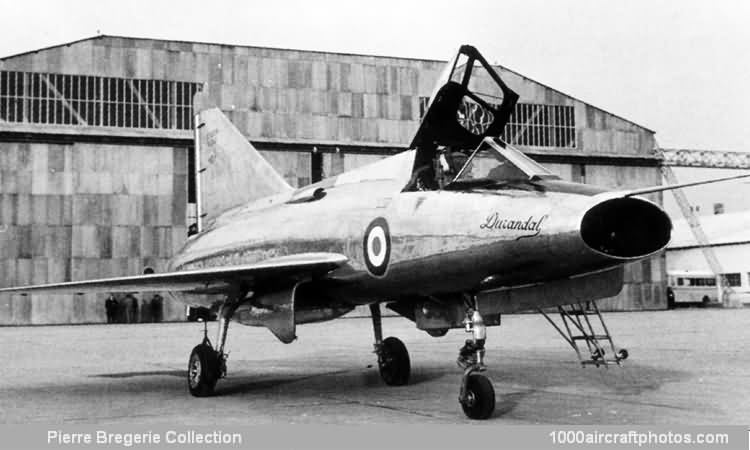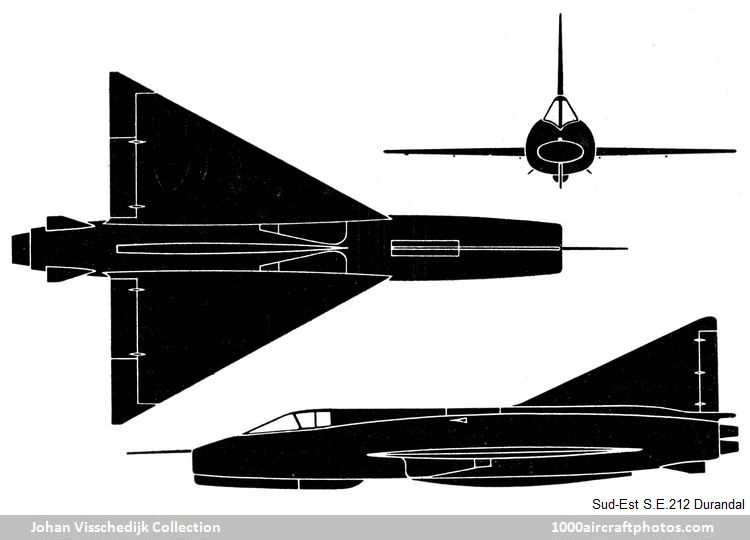12/31/2010. Remarks by Pierre Bregerie: "From the end of 1951, the bureau d'études headed by Pierre Satre at the SNCA du Sud-Est undertook a series of studies of potential lightweight mixed-power interceptor fighters under what was effectively the generic designation S.E.212. These studies crystallized in the shape of a small, 60° delta powered by a SNECMA Atar 101F with an afterburning thrust of 8,377 lb (3,800 kg) and a 1,653lb (750 kg) SEPR 75 rocket motor.
The primary armament was intended to consist of a single AA 20 or R 052 missile carried externally on the fuselage center line, alternative armament being two 1.18 in (30 mm) DEFA cannon or 24 SNEB rockets of 2.68 in (68 mm) caliber. An official contract was placed for two prototypes, the first of which was flown on April 20, 1956 without the rocket motor fitted. The Atar 101F turbojet was subsequently replaced by an Atar 101G with an afterburning thrust of 9,700 lb (4,400 kg), and the first flight during which the rocket motor was lit took place on December 19, 1956.
The second prototype SE 212 was flown on March 30, 1957. During flight testing a speed of 898 mph (1,444 kmh) was attained at 40,355 ft (12,300 m) without the rocket motor and 1,036 mph (1,667 kmh) was reached at 38,715 ft (11,800 m) with the rocket motor lit. These speeds were achieved without armament fitted, and the test program terminated in 1958."

